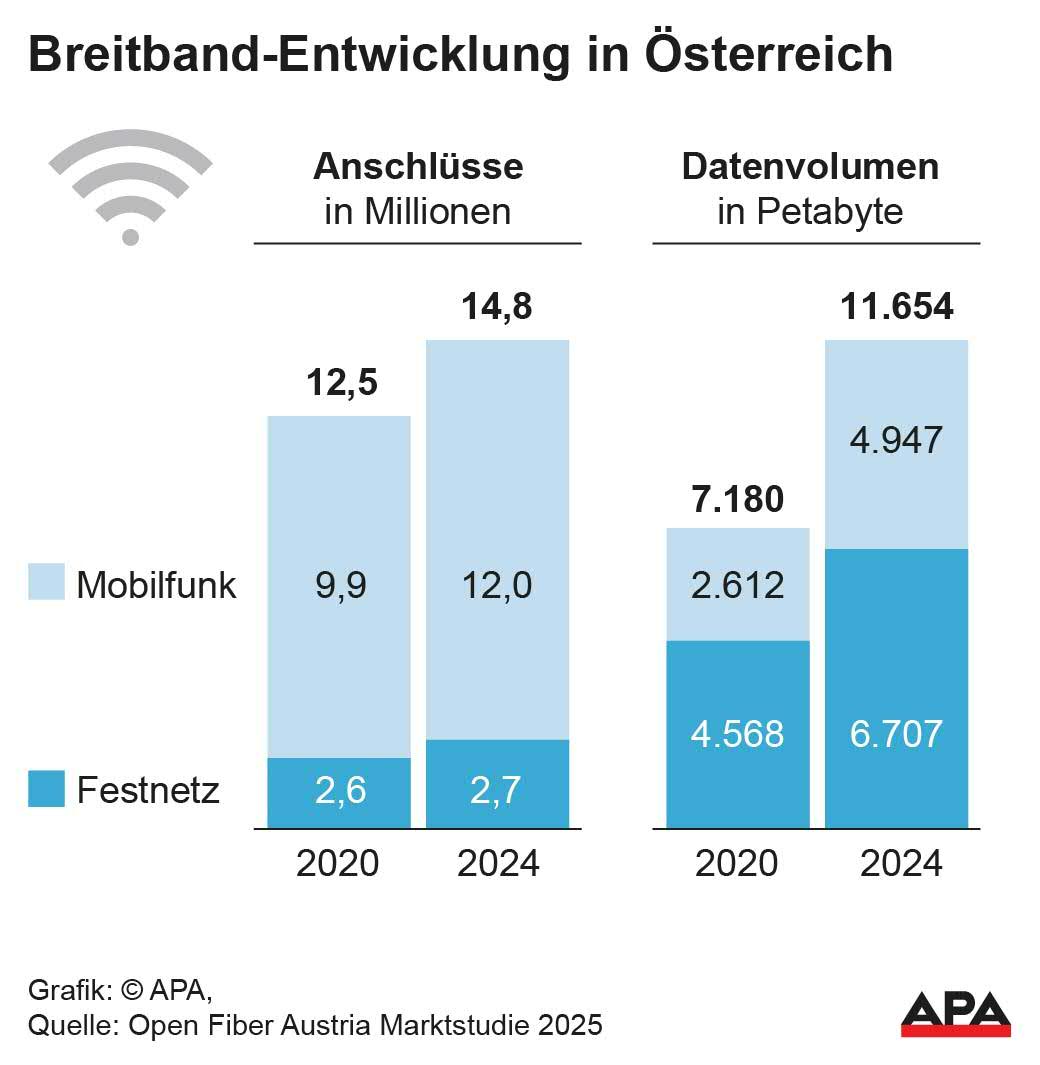Fiber Optic Usage Lags Particularly in Cities

The fiber optic expansion in Austria is progressing. Four out of ten customers are already supplied with such a connection. However, only one in five actually uses the opportunity, so only 370,000 fiber optic connections are actually active, according to current figures from the organization Open Fiber Austria. In rural areas, fiber optics are much more frequently adopted than in the city. Despite progress, Austrian households are less well supplied than in other EU countries.
Fiber optics is the technology of the moment and essential for Austria to remain internationally competitive, said Jens Böcker from the Bonn-Rhein-Sieg University of Applied Sciences, who prepared a study on the situation in the Austrian broadband market for the OFAA, on Wednesday before journalists. Even if not everyone currently needs this connection with practically unlimited bandwidth, the infrastructure must be built now, as data volume is increasing drastically.
More Interest in Fiber Optics in Rural Areas
It shows that especially in rural areas, customers are much more likely to use fiber optics when it is available. Here, one-third sign a contract after the introduction of fiber optics, while in cities it is just over ten percent, said OFAA Vice President Martin Wachutka in the joint press conference.

From 2020 to 2024, the data volume across all broadband connections - not just fiber optics - increased from 7.2 to 11.7 petabytes. In the mobile network, there was almost a doubling to just under 5 petabytes, while the data volume in the fixed network increased by a good 40 percent to 6.7 petabytes, according to Böcker. This is also reflected in the development of the used connections. In 2024, there were twelve million mobile connections with broadband supply, two million more than five years before. The number of fixed network connections with broadband increased by only 100,000 to 2.7 million in the same period. Here, a replacement of connections via copper cable with more modern technologies is taking place, explained Herbert Flatscher, chairman of the OFAA advisory board. However, this is a problem for telecom companies, as they have to make high investments in the fiber optic infrastructure and ultimately only shift their own customers from one product to another. It takes about 25 years for this investment to pay off, which is not a motivation for companies.
Subsidies Crucial for Less Densely Populated Areas
Not only for this reason will subsidies continue to be needed. About two billion euros of public funds are necessary to ensure comprehensive coverage with broadband connections of all kinds, estimates the OFAA. There are some regions where subsidies are not needed. However, it is different in large-area countries, where the distances to the next customer are long. Companies would have to contribute another three billion euros, totaling about five billion euros, estimates Wachutka.
The OFAA is particularly advocating for open networks, i.e., telecommunications networks that are then available to all providers. 25 such networks are in operation across Austria, providing 26 percent of all active fiber optic connections - there, end customers can choose their provider themselves, said Flatscher. While Austria is significantly better than Germany (17 percent) in this regard, the example of Sweden shows that more is possible. There, 60 percent of fiber optic connections are accounted for by open networks.
(APA/Red)
This article has been automatically translated, read the original article here.
Du hast einen Hinweis für uns? Oder einen Insider-Tipp, was bei dir in der Gegend gerade passiert? Dann melde dich bei uns, damit wir darüber berichten können.
Wir gehen allen Hinweisen nach, die wir erhalten. Und damit wir schon einen Vorgeschmack und einen guten Überblick bekommen, freuen wir uns über Fotos, Videos oder Texte. Einfach das Formular unten ausfüllen und schon landet dein Tipp bei uns in der Redaktion.
Alternativ kannst du uns direkt über WhatsApp kontaktieren: Zum WhatsApp Chat
Herzlichen Dank für deine Zusendung.



